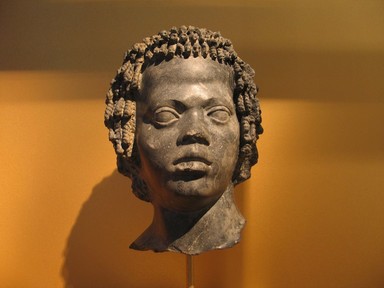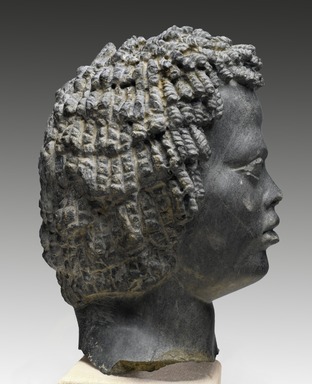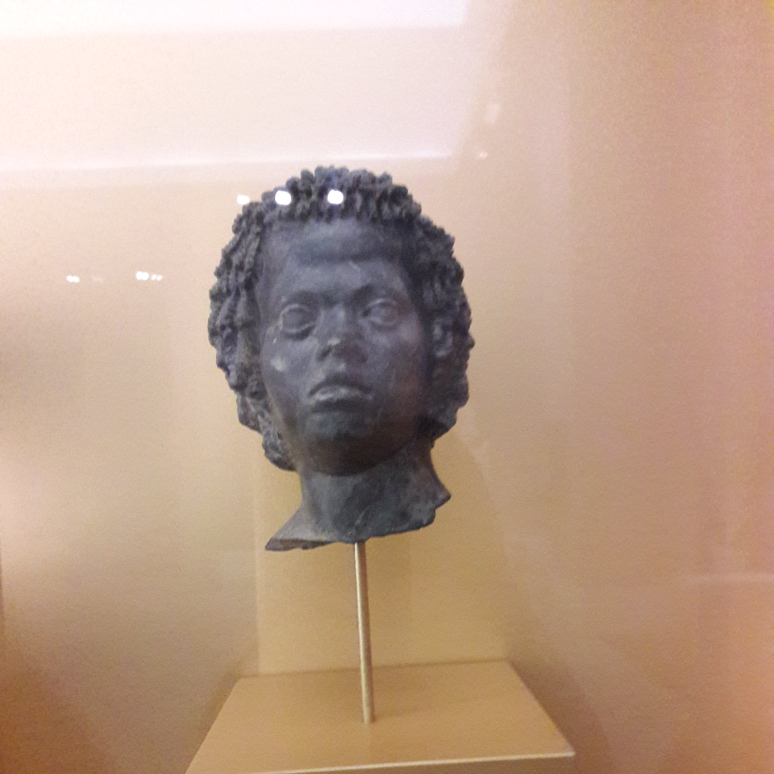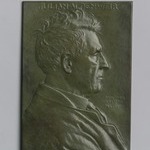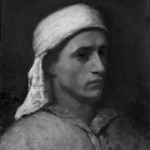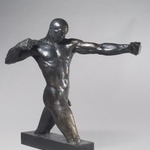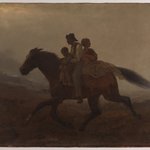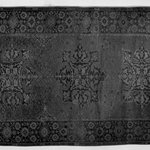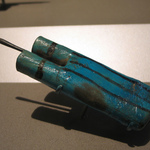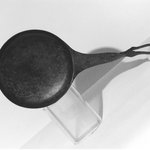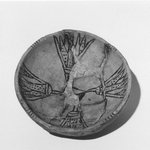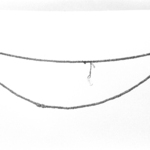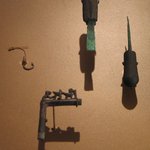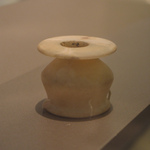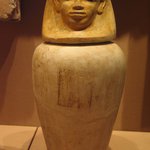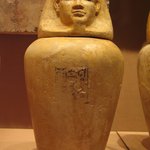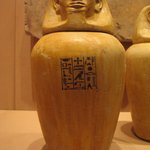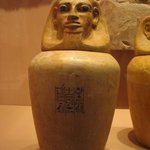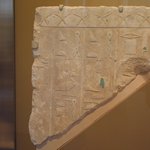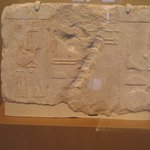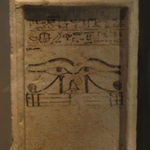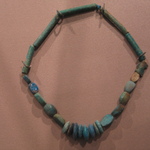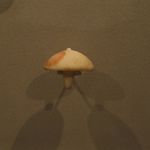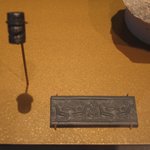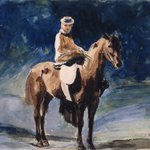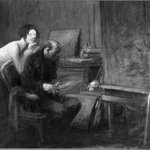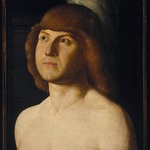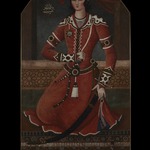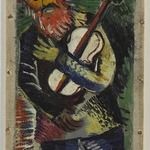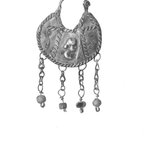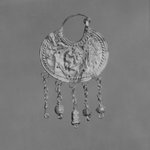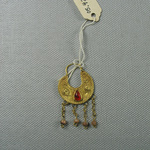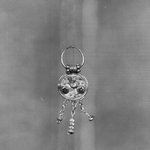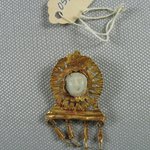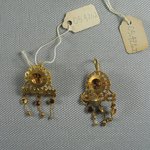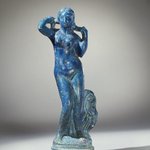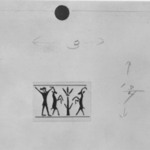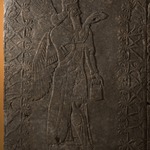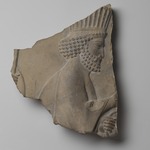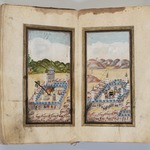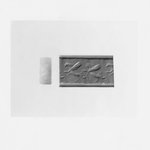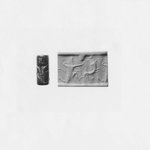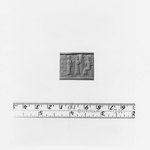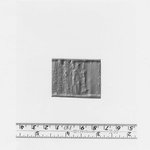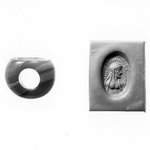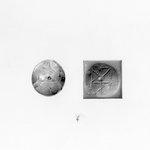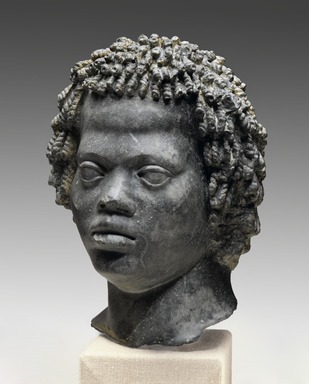

Ancient Near Eastern. Head of a Man with Tight, Curly Hair, late 2nd century B.C.E. Marble, "Bigio Morata", 11 x 7 11/16 x 7 1/2 in. (28 x 19.5 x 19 cm). Brooklyn Museum, Charles Edwin Wilbour Fund, 70.59. Creative Commons-BY (Photo: Brooklyn Museum, 70.59_PS2.jpg)
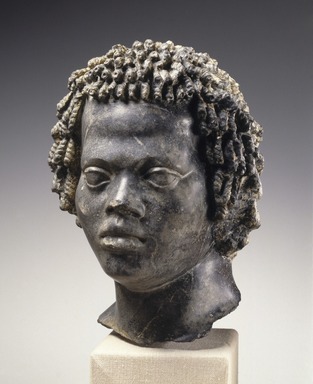
Ancient Near Eastern. Head of a Man with Tight, Curly Hair, late 2nd century B.C.E. Marble, "Bigio Morata", 11 x 7 11/16 x 7 1/2 in. (28 x 19.5 x 19 cm). Brooklyn Museum, Charles Edwin Wilbour Fund, 70.59. Creative Commons-BY (Photo: Brooklyn Museum, 70.59_SL1.jpg)
Head of a Man with Tight, Curly Hair
Egyptian, Classical, Ancient Near Eastern Art
On View: Egyptian Orientation Gallery, 3rd Floor
Changing Faces of the Ancient Nile Valley
Despite the common belief that Egyptian artists were reluctant to change, close examination of works produced over many generations shows that they could be quite innovative in artistic style— the distinctive features of aesthetic expression characterizing a period.
The chief royal sculptor, responsible for official images of the king, usually developed at least one standard “court style.” But styles often varied from one dynasty to the next, and two or more styles often evolved during a single dynasty or even a single reign.
Several forces could result in a new style. A pharaoh’s death could motivate the chief royal sculptor to devise a fresh “standard” for depicting his successor. The replacement of one chief sculptor by another might also inspire innovation. Or perhaps young carvers reacted to the teachings of the chief sculptor, introducing subtle modifications that, over time, became an entirely new style.
The carved heads in this case and in the one on the right, spanning more than three thousand years, demonstrate clear changes in stylistic expression.
Despite the common belief that Egyptian artists were reluctant to change, close examination of works produced over many generations shows that they could be quite innovative in artistic style— the distinctive features of aesthetic expression characterizing a period.
The chief royal sculptor, responsible for official images of the king, usually developed at least one standard “court style.” But styles often varied from one dynasty to the next, and two or more styles often evolved during a single dynasty or even a single reign.
Several forces could result in a new style. A pharaoh’s death could motivate the chief royal sculptor to devise a fresh “standard” for depicting his successor. The replacement of one chief sculptor by another might also inspire innovation. Or perhaps young carvers reacted to the teachings of the chief sculptor, introducing subtle modifications that, over time, became an entirely new style.
The carved heads in this case and in the one on the right, spanning more than three thousand years, demonstrate clear changes in stylistic expression.
CULTURE
Ancient Near Eastern
MEDIUM
Marble, "Bigio Morata"
GEOGRAPHICAL LOCATIONS
- Possible place made: Turkey
- Place made: Eastern Mediterranean Region
DATES
late 2nd century B.C.E.
PERIOD
Ptolemaic Period
DIMENSIONS
11 x 7 11/16 x 7 1/2 in. (28 x 19.5 x 19 cm) (show scale)



COLLECTIONS
Egyptian, Classical, Ancient Near Eastern Art
ACCESSION NUMBER
70.59
CREDIT LINE
Charles Edwin Wilbour Fund
CATALOGUE DESCRIPTION
Dark grey marble head representing a Nubian with heavily curled hair. The head was broken from a larger sculpture near the base of the neck and a smaller portion of the right shoulder is preserved. The facial features are quite asymmetrical with the mouth being twisted somewhat to the right.
Condition: Right cheek, lower lip, outer corners of right eye and lid, hair and tip of nose are chipped; other small chips. There are several surface cracks in the face. One rounds around almost entire face cutting through the forehead and then down both sides of the face near the hairline. It is cut by another crack which runs through the right cheek and terminates at the left side of the mouth. A smaller crack runs through the left eye down into the lips. There are other smaller cracks. Encrusted dirt and other deposits in the hair.
EXHIBITIONS
MUSEUM LOCATION
This item is on view in Egyptian Orientation Gallery, 3rd Floor
CAPTION
Ancient Near Eastern. Head of a Man with Tight, Curly Hair, late 2nd century B.C.E. Marble, "Bigio Morata", 11 x 7 11/16 x 7 1/2 in. (28 x 19.5 x 19 cm). Brooklyn Museum, Charles Edwin Wilbour Fund, 70.59. Creative Commons-BY (Photo: Brooklyn Museum, 70.59_PS2.jpg)
IMAGE
overall, 70.59_PS2.jpg. Brooklyn Museum photograph, 2010
"CUR" at the beginning of an image file name means that the image was created by a curatorial staff member. These study images may be digital point-and-shoot photographs, when we don\'t yet have high-quality studio photography, or they may be scans of older negatives, slides, or photographic prints, providing historical documentation of the object.
RIGHTS STATEMENT
Creative Commons-BY
You may download and use Brooklyn Museum images of this three-dimensional work in accordance with a Creative Commons license. Fair use, as understood under the United States Copyright Act, may also apply.
Please include caption information from this page and credit the Brooklyn Museum. If you need a high resolution file, please fill out our online application form (charges apply).
For further information about copyright, we recommend resources at the United States Library of Congress, Cornell University, Copyright and Cultural Institutions: Guidelines for U.S. Libraries, Archives, and Museums, and Copyright Watch.
For more information about the Museum's rights project, including how rights types are assigned, please see our blog posts on copyright.
If you have any information regarding this work and rights to it, please contact copyright@brooklynmuseum.org.
RECORD COMPLETENESS
Not every record you will find here is complete. More information is available for some works than for others, and some entries have been updated more recently. Records are frequently reviewed and revised, and we welcome any additional information you might have.
